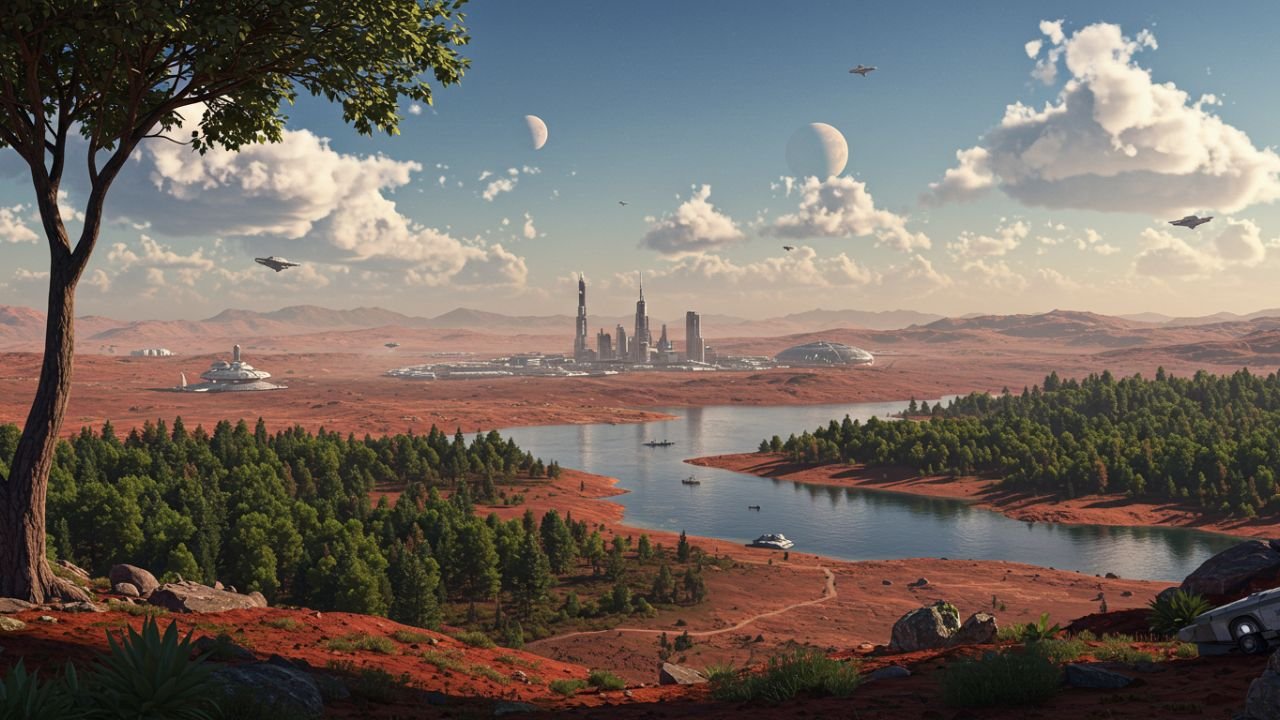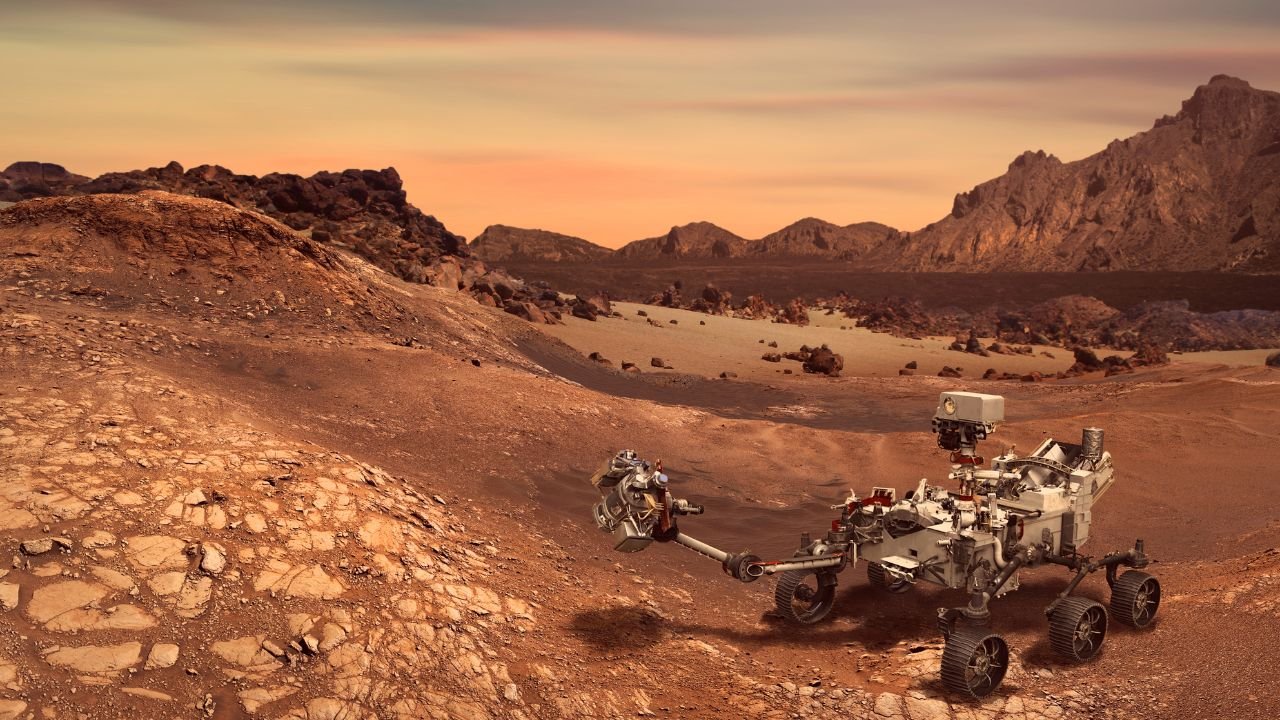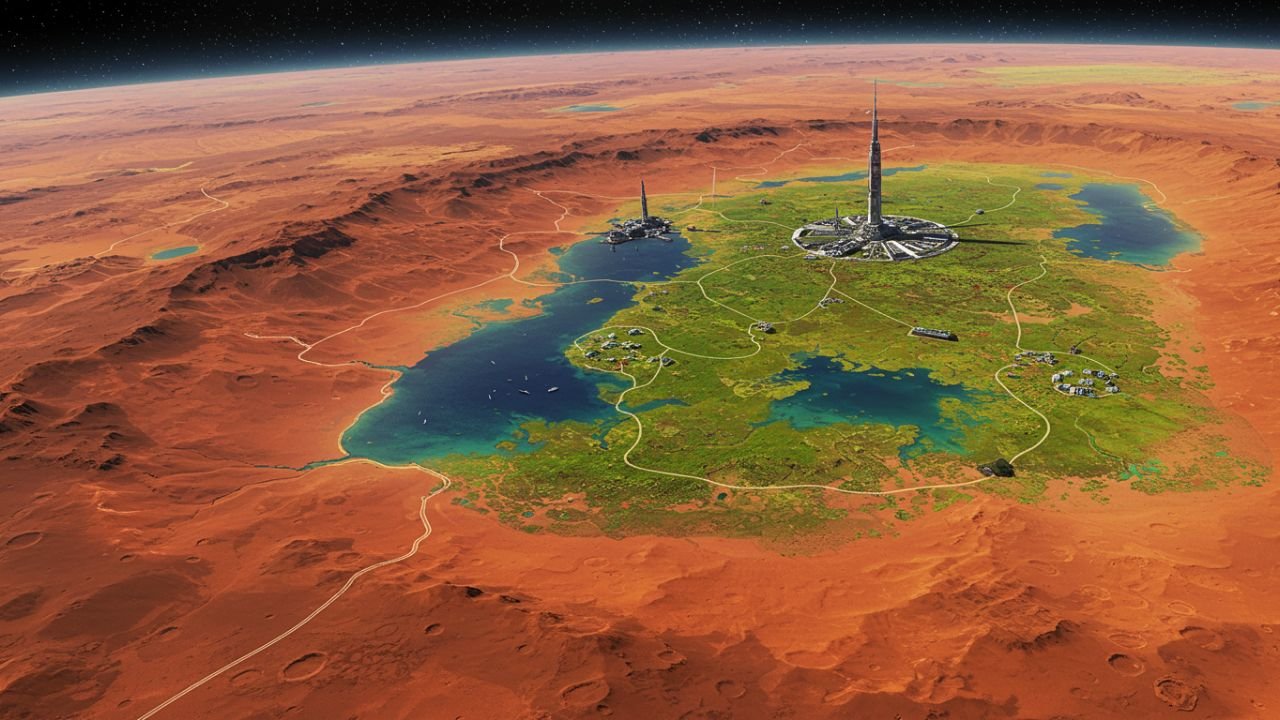Mars, often called the Red Planet, has attracted attention as a planet for many years that may have supported life. Its surface features and geological structures give scientists important clues about its history. Through various space missions and research efforts, new information about the planet’s atmosphere has been revealed for the first time.
Scientific evidence suggests that Mars had a situation that could support life. The presence of river channels alongside lake beds and water-formed minerals indicates that liquid was once present. Studies also indicate that Mars might have had a thicker atmosphere and a more stable climate in the past. These conditions, with elements such as carbon, hydrogen, oxygen, and nitrogen, indicate the possibility that life may exist.
Also Read: What exactly is an earth like planet?
There is no direct proof of life on Mars, but evidence suggests that Mars once required the basic elements required for life. Researchers are still examining samples and data to learn more about the planet’s history.
Was Mars Ever Habitable?

Yes, Mars was probably habitable about 3 to 4 billion years ago. Research by NASA’s Curiosity rover provided evidence in the sulfate layers of Gale Crater for the existence of siderite, an iron carbonate mineral. This suggests that Mars had once held a thicker, carbon dioxide-rich atmosphere, providing liquid water that was eventually stable enough for life.
Old river valleys, lake beds, and clays, sulfates, and organic molecules found by rovers and orbiters also suggest that Mars once supported environments where microbial life could have existed. The loss of Mars’s magnetic field over time led to a thinning atmosphere and a drying of its surface. Scientists have not detected direct evidence of life, but the findings make early Mars a promising candidate for past habitability.
How can Mars be habitable?
The process of making Mars habitable is called terraforming. It involves changing the planet’s atmosphere, temperature, and surface to support human life. Methods like releasing greenhouse gases or melting ice caps are proposed, but it’s still theoretical and would require advanced technology, time, and significant resources to achieve.
🔬 Subscribe to SciMail
Get the latest science discoveries straight to your inbox!
Could Life Have Survived on Mars?
Yes, life could have survived on Mars in the past. Billions of years ago, the planet had liquid water, a thicker atmosphere, and essential chemical ingredients for life. Evidence from rovers and orbiters, like ancient riverbeds, lake beds, and organic molecules, suggests that the red planet may have supported simple microbial life.
NASA Missions and Their Discoveries

NASA has sent many missions to Mars, helping us learn about the planet’s history, climate, and potential for life
- Viking 1 & 2 (1976): The first landers on Mars. They searched for signs of life and studied the soil.
- Pathfinder (1997): Delivered the first rover, Sojourner. It studied rocks and the Martian weather.
- Spirit and Opportunity (2004): These twin rovers found strong evidence that water once flowed on Mars.
- Phoenix Lander (2008): Discovered water ice just beneath the surface and found perchlorate salts, which might support certain types of life.
- MAVEN Orbiter (2014–Present): Showed how solar wind stripped away Mars’ atmosphere, helping explain how the planet went from wet to dry.
- Curiosity Rover (2012–Present): Found ancient lake beds in Gale Crater, organic molecules, and signs that Mars had habitable conditions about 3.5 billion years ago.
- Perseverance Rover (2021–Present): Discovered carbon-rich organic material in Jezero Crater, collected rock samples for future study, and confirmed that Mars once had conditions that could support microbial life.
- Mars Sample Return (Planned 2030s): This mission will bring back the samples collected by Perseverance to Earth for detailed testing and could give us a clear answer about past life there.
Together, these missions help us understand if Mars was once a place where life could have existed.
Mars remains an important focus in our exploration for extraterrestrial life. Scientists have strong indications that it once had life-supporting conditions despite finding no direct evidence of life. The existence of ancient rivers and lakes alongside organic molecules and a dense atmosphere suggests that billions of years ago, the world could have supported life. Scientists are searching for deeper insights into Mars through current missions combined with planned projects such as the Sample Return Mission. Each discovery helps researchers learn more about Mars’ true past and whether life ever existed.


Leave a Reply